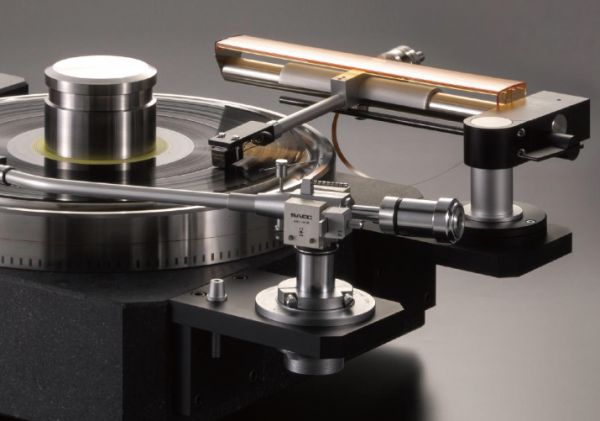Congratulations Mike. You have a nice combination of drive typologies.
thank you Peter.
you always ask the questions that go deep and have to wait 'till later' when i have time to craft a worthy response. and i enjoy you pushing me to think a little.

a year ago i was considering that i had really pushed my digital to the bleeding edge, and added a 3rd Studer A-820, my overall system performance was satisfying, but i had not really pushed my vinyl as much. i had almost bought the AS-2000 but realized that my NVS had areas that i would miss if i got rid of it to afford the AS-2000. i knew if i spent the money on the AS-2000 that would be it for my vinyl. so i passed. i wanted what the NVS did.....too. i knew i still had interest in owning a top tier belt driven turntable, and spend time with it. so my radar was activated. i wanted a very top level performer. quite a few did cross my view that i'm not going to mention, but eventually i caught wind of the CS Port tt.
How did you settle on the CS Port over some other high mass belt/thread drive tables?How did you settle on the CS Port over some other high mass belt/thread drive tables? Was it the linear tracking arm? I now have to go back to re-reading Mik's synopsis of the various tables he likes.
i'd known Mik since my early Rockport days, 2004-2005, and so i reached out to him and we did discuss the CS Port. his feedback was similar to what we've read on the forum. it was a turntable that had this special sort of sound, with a quality and style to match. and he knew i was enough of a tweaker and possessed the linear tracking feel to be able to get it to perform.
as far as other choices, i'd say i had some information, but also i put my trust in Mik on that score. i'd like to tell you i've had extensive listening time with all the choices but that's not true. unless you are Ked, how to you hear enough tt's in a helpful context to know what is doing what? answer; you really can't. there is an element of the 'eye' test involved where you look to see how a design 'feels' and whether it makes sense and the dots connect. even observe who built it and how that looks. not sure how to define it more. it was not only Mik, it was also just observing and seeing what looked right.
Mik and i do share our Rockport time, and he has plenty of turntables there that he has talked about in relation to the CS Port. and the things he related to me about the CS Port is exacly what i'm hearing so far.
Do you have plans to eventually compare the two phono stages?
sure. already have.....but too soon to really get into that. the CS Port phono was relatively modest in price, and Mik was quite impressed with it's performance for value. and he has many phono stages there to compare with.
i think he is right.
I'm also curious about the effect of the two different top shelves under your three turntables.
all three have the same Adona Zero GTX granite over cherry top plate, one supporting the Tana shelf. the CS Port has hard footers directly on the granite. CS Port offers a similar granite top plate and it's what it was voiced using. i'm very impressed with the frequency balance and natural flow i'm hearing.
the Saskia II uses built-in integral Stillpoint-like chassis interfaces, and again, the presentation really sparkles as it is. two weeks ago when my third Adona rack arrived and i had to tear apart my system (i had to move the other 2 racks 15" forward in the room to fit the 3rd rack), and at the same time my dart 458's were being shipped out to their new owner, i had a spare Tana TS-140 to try under the Saskia. so we tried it. i turned it on so the idler wheel was turning; i saw noise on the side readout of the Tana, then when i engaged the idler wheel and the platter started turning much more noise showing up on the screen. even when the platter got up to speed there was still lots of noise. so the Saskia is not a candidate for active. btw; zero noise on the NVS........ZERO.
and i have written extensively on the NVS on it's Tana on top of the granite.
You have many variables now to explore optimization for each LP.
yes, i do, don't i.








